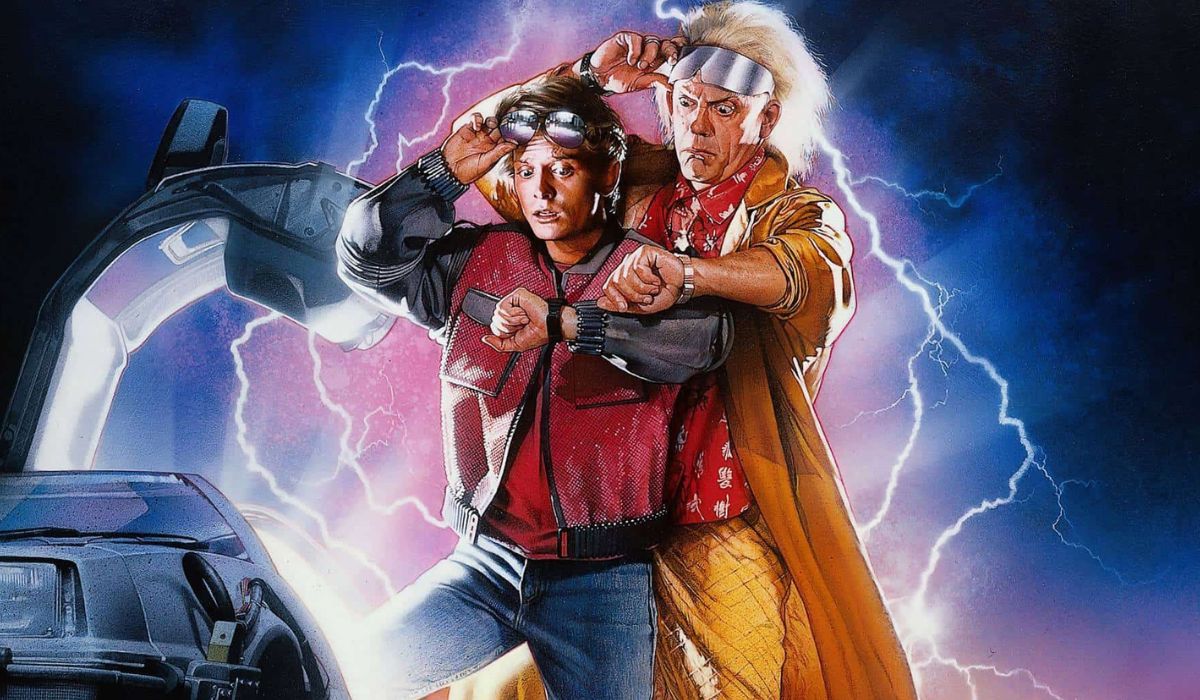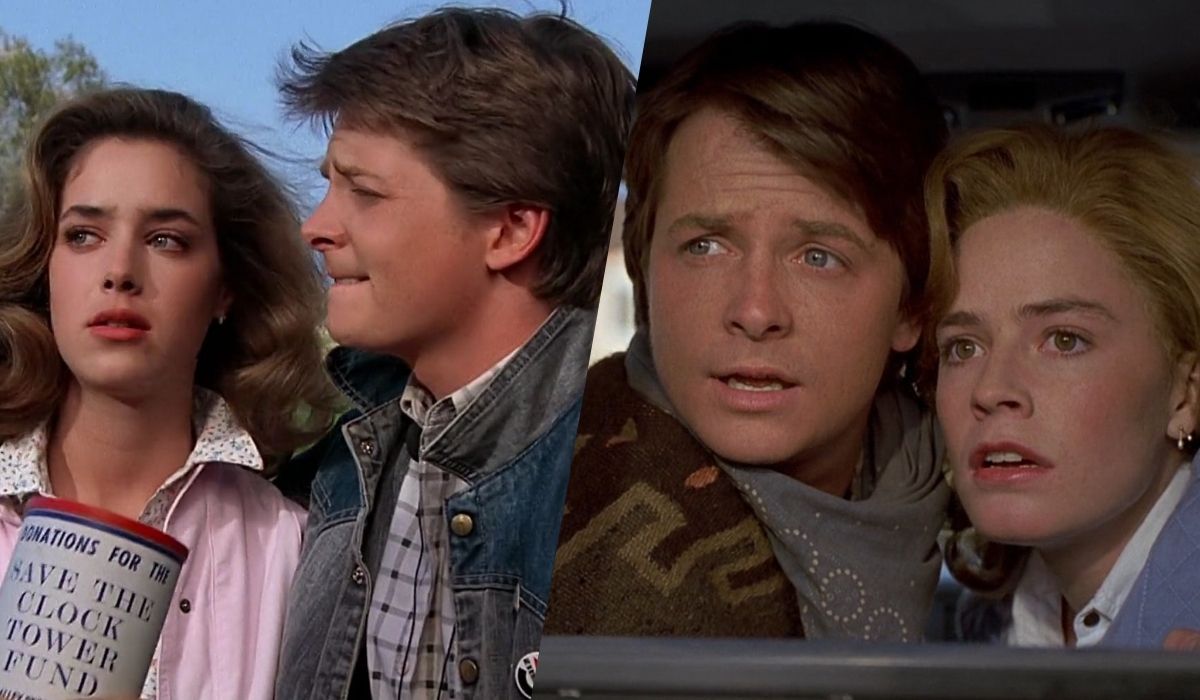
Not many films are as cherished and re-watched as “Back to the Future,” a trilogy that made us think a DeLorean could traverse time and that altering the past had significant consequences. Despite its iconic status, even this ’80s blockbuster has minor imperfections – or at least elements that continue to spark debate among fans today. One of the most conspicuous is the change in actress playing Jennifer Parker, Marty McFly’s (Michael J. Fox) girlfriend, between the first and second movies. In the initial film, she is portrayed by Claudia Wells, whereas Elizabeth Shue assumes the role in “Part II” and “III.” The most intriguing aspect? This transition takes place without any explanation within the storyline. However, just like any dedicated fanbase, enthusiasts have come up with a theory to account for this – and it’s as imaginative as it is enjoyable.
The theory frequently debated on Reddit centers around a fundamental aspect of the narrative: temporal alterations. Essentially, this story’s foundation rests on the premise that minor actions in the past can lead to substantial changes in the future, as demonstrated in the movie “Back to the Future”. If Marty McFly prevents his mother from falling in love with him in the 1950s, his parents remain together, resulting in a 1985 significantly different from the one he initially left. His father becomes an accomplished author, his mother gains self-assurance, his siblings achieve better careers, and even their family home is kept in better condition. Not only does this alteration affect Marty’s life, but it also transforms Biff (Thomas F. Wilson), now employed by the family, and the world as a whole undergoes a dramatic shift.

Here, Jennifer enters the scene. Although her part in the initial film is somewhat limited, she is undeniably Marty’s girlfriend. However, this becomes puzzling in the second movie as audiences encounter an entirely new Jennifer – physically different, with slightly altered behavior, and surprisingly, none of the characters seem to acknowledge this change. Some viewers accepted this as a production adjustment, something they had to adapt to. But for others, it left a plot hole that seemed to demand a more creative resolution. So, what’s the explanation behind this?
The fan theory implies that the transformation observed in the story could be due to the time-travel adjustments made by Marty. Since he significantly modified the past, it’s plausible that the circumstances leading him to meet Jennifer and even her upbringing and life experiences would have been altered as well. This would result in a version of Jennifer who looks and behaves differently, although fundamentally she remains the same person. Within the narrative, this idea is not only believable but also consistent with the storyline. After all, if Marty’s father could transition from a timid man to a successful author, it seems logical that Jennifer’s appearance might change too – it fits the pattern.
In many time travel narratives, the “butterfly effect” principle is frequently exaggerated – even minor alterations in the past can set off chain reactions that affect the future, big or small. Some viewers argue that Marty didn’t react to Jennifer’s changed appearance because he had adapted to this shift. Others propose a more scientific explanation, suggesting a mechanism called “adaptive memory,” whereby a time traveler’s brain, when moving between dimensions and alternate realities, automatically adjusts to accommodate slight differences in the present.

In a twist of events, I had to step aside from my role due to personal matters – my mother’s illness prevented me from continuing with the sequels. Kate Shue, who was already well-known to audiences, took over the part. The production team decided not to delve into the reasons behind this change directly, probably assuming it wouldn’t raise any eyebrows among fans. Yet, they underestimated our keen observational skills and curiosity.
In later conversations, Wells herself humorously endorsed the theory, conceding it was believable within the world of Back to the Future. Additionally, Doc Brown (Christopher Lloyd) frequently cautioned about the unforeseen repercussions of tampering with time. If one of those results is a modification in Jennifer’s appearance, that aligns with the established principles of time travel.
In essence, this theory not only clarifies one of the trilogy’s most enigmatic and amusing scenes – it also enriches the narrative with a deeper understanding of its multiverse. Rather than dismissing the actor swap as a trivial production choice or accident, it presents compelling proof of the intricate and fluid nature of time travel in this story’s universe.
The Back to the Future trilogy is available to stream on Prime Video.
Read More
- Masters Toronto 2025: Everything You Need to Know
- We Loved Both of These Classic Sci-Fi Films (But They’re Pretty Much the Same Movie)
- ‘The budget card to beat right now’ — Radeon RX 9060 XT reviews are in, and it looks like a win for AMD
- Valorant Champions 2025: Paris Set to Host Esports’ Premier Event Across Two Iconic Venues
- Forza Horizon 5 Update Available Now, Includes Several PS5-Specific Fixes
- Street Fighter 6 Game-Key Card on Switch 2 is Considered to be a Digital Copy by Capcom
- Gold Rate Forecast
- The Lowdown on Labubu: What to Know About the Viral Toy
- Karate Kid: Legends Hits Important Global Box Office Milestone, Showing Promise Despite 59% RT Score
- Mario Kart World Sold More Than 780,000 Physical Copies in Japan in First Three Days
2025-05-04 03:40